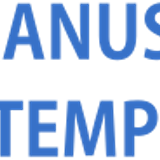HYDRATE MITIGATION FOR DEEP WATER AND LONG DISTANCE PIPELINE – FLOW ASSURANCE APPROACH
Abstract
The existence of gas hydrates is well known in the oil and gas production industry. The components are dominated by methane and naturally occur in deep marine sediment along continental margins. Although hydrates may be of potential benefi t both as a hydrocarbon resource and as a mean of storing and transmitting natural gas, traditionally their presence is considered to be an operational and a safety problem. They can form at the pressures and temperatures found in natural gas and oil pipelines causing blockages, especially when temperature falls signifi cantly, such as when closing in a well or fl owing gas through a choke. This could deliver a serious potential problem for oil and gas offshore production either for its equipment or personnel. Besides the variation of gas rate to avoid hydrates forming, currently there are two methods that have been used widely to prevent hydrates formation in production pipelines - thermal insulation and chemical inhibitor. Each method has its own benefits. PIPESIM software application can be used to evaluate both mitigation methods and to then fi nd which is the best scenario based on lowest cost, shortest period of application and less adversity.
Keywords
Full Text:
PDFReferences
Ameripour, Sharareh., 2005, “Prediction of Gas-Hydrate Formation Conditions in Production and Surface Facilities”, Thesis-Texas A&M University, Texas.
Barrufet, Maria A., 2013, “Lecture 33-34 Gas Hydrates” PETE310, Texas A&M University, Texas, 2010.
Bradley, Howard B., 2005, “Petroleum Engineering Handbook”, SPE Textboox Series, Texas.
Bishnoi, P.R., “Gas Hydrates Research”, Gas Hydrates Research Group, University of Calgary, Canada, accessed on Sept.
Chittawan, Nakarit., 2012, “Gas Hydrate Formation and Control by the Use of Chemicals”, Thesis-Faculty of Science and Technology, University of Stavanger, Norway.
Edmonds, B, et al. 1998, “Hydrate Update”, GPA Spring Meeting, Darlington, London.
Folger, Peter., 2010, “Gas Hydrates : Resource and Hazard”, Congressional Research Service, USA.
Fajarwati, Kartika., 2012, “Study of Liquid Condensation in Offshore Gas/Condensate Transmission Pipeline Network”, Bandung Institute of Technology, Indonesia.
Jeon, Yong-han, et al. 2006, “A Study of the Kinetic Characteristic of Natural Gas Hydrate”, Journal Vol.12 No.5, Inha University, Inchon, Korea.
Lake, Larry W., 2006, “Petroleum Engineering Handbook”, Society of Petroleum Engineers, Texas, USA.
Lake, Larry W., 2006, “Petroleum Engineering Handbook”, Society of Petroleum Engineers, Texas, USA.
Lundgaard, Lars, et al. 1992, “Calculation of Phase Diagrams of Gas-Hydrates”, Elsevier Science Publisher B.V, Amsterdam.
Lundgaard, Lars, et al. 1992, “Calculation of Phase Diagrams of Gas-Hydrates”, Elsevier Science Publisher B.V, Amsterdam.
McCain, William D., 1990, “The Properties of Petroleum Fluids”, PennWell Publishing Company, Oklahoma, 1990.
Pedersen, Karen Schou. Chistensen, Peter L., 2007, “Phase Behavior of Petroleum Reservoir Fluids”, Taylor & Francis Group.
Pickering, P.F, et al. “Evaluating New Chemicals and Alternatives For Mitigating Hydrates in Oil & Gas Production”, FEESA Ltd, UK.
Schlumberger, 2013, “PIPESIM, The Next generation in multiphase flow simulation”, Schlumberger
Tarek, Ahmad., 1989, “Hydrocarbon Phase Behavior”, Gulf Publishing Company, Houston.
Tohidi, Bahman., Chapoy, Antonin., “ The Potential for Methane Hydrate Formation in Deep Repositories of Spent Nuclear Fuel in Granitic Rocks”, Institute of Petroleum Engineering, Heriot-Watt University, Edinburg, Swedish, 2010.
Zheng, SU, et al. 2007, “Calculation of Methane Hydrate Solubility in Marine Environment and Its Constrains on Gas Hydrate Occurrence”, Chinese Journal of Geophysics, Guangzhou.
DOI: https://doi.org/10.29017/SCOG.38.2.544

This work is licensed under a Creative Commons Attribution-NonCommercial-NoDerivatives 4.0 International License.






